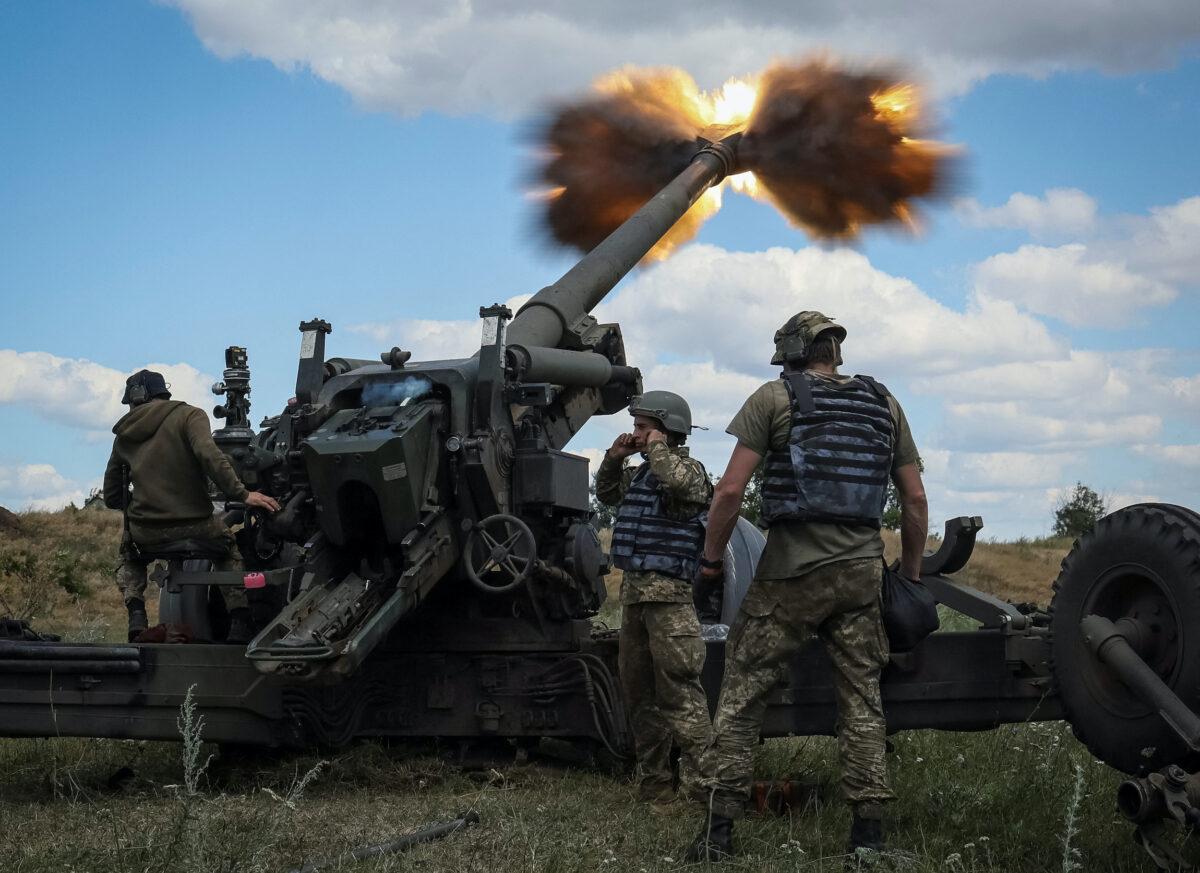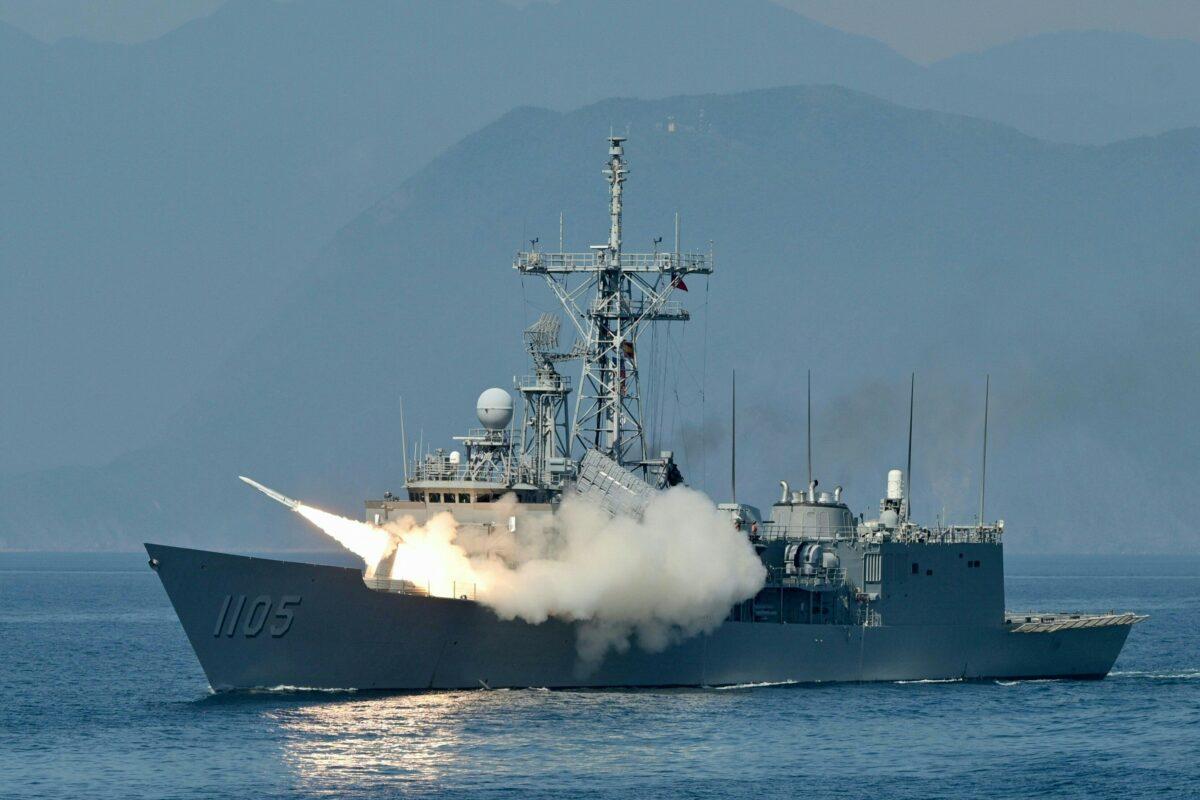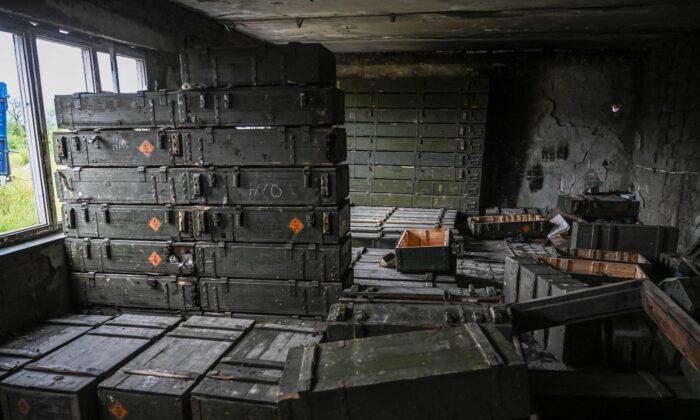As Russian paratroopers descended on Kyiv and attempted to seize Antonov Airport, U.S. officials offered Ukrainian President Volodymyr Zelenskyy a lifeline. Western leaders could guarantee him safe passage if he fled immediately.
In the 15 months since, the United States has spent tens of billions of dollars giving Zelenskyy and embattled Ukraine just that. Now, officials say, the nation has depleted its own stores of critical munitions so severely that it would likely be incapable of fighting a major war.

The Pentagon declined to provide an update to The Epoch Times on the status of its current munition stockpiles, with one spokesperson saying that providing any specifics on the matter could jeopardize “operational security.”
However, the spokesperson suggested that the United States is making great strides to rebuild what has been lost.
“Of note, the department has enabled a rapid increase in 155mm ammo production, from approximately 14,000 a month in February 2022 to over 20,000 a month more recently, with plans to produce more than 70,000 a month in 2025,” the spokesperson told The Epoch Times.
“This represents a 500 percent increase.”
There’s a problem with the Pentagon’s rosy outlook on its quickly dwindling stockpiles: Even with a 500 percent increase in production by 2027, the nation would still only be halfway to keeping afloat.
That’s a rate of more than 130,000 rounds per month, which is nearly twice as much as the proposed production rate of 70,000 that the Pentagon hopes to achieve in five years.

US Struggles With Production
To be sure, the Pentagon has taken steps to stop the hemorrhaging of its critical munitions stocks. Most notably, it has taken, wherever possible, to purchasing ammunition for Ukraine from other countries rather than stripping its own stores.How long the current balance can be kept is open for debate. Allied stockpiles aren’t infinite either, and some partners are already thinking about their own security concerns.
Even that may not be enough, however.
“My sense is we’re going to need to do more,” she said during a March 30 hearing of the Senate Armed Services Committee.
“One thing the war in Ukraine has shown us is that the estimates we’ve made for the munitions [required] for future conflicts are low.”
The Army’s first tranche of investments, worth $1.5 billion, is included in the Pentagon’s budget request for fiscal year 2024. That’s expected to help the Army expand and modernize the nation’s ammunition production facilities, arsenals, and depots, many of which date back to World War II.
Despite the stoic facade presented by policymakers, the idea that it will take 15 years to modernize U.S. munitions production capabilities concerns some lawmakers. That’s particularly true for those dedicated to blocking a Chinese communist invasion of Taiwan.

Insufficient US Stockpiles, Systems
The House Select Committee on the Chinese Communist Party (CCP) is tasked with overseeing the nation’s strategic competition with China’s communist regime. A key part of that competition is preventing a CCP invasion of Taiwan, which many believe the regime intends by 2027.In order to prevent that from happening, the United States needs ammo to arm Taiwan and, potentially, to use in a war defending the island nation’s de facto independence.
It’s thus no small surprise that Select Committee Chair Mike Gallagher (R-Wis.) expressed dismay when told that Wormuth’s plan for modernizing the U.S. arsenal would take 15 years.
“Fifteen years is too late,” Gallagher told The Epoch Times.
“I think that five years is too late.”
“If you look at our recommendations, it’s what we can do in the next two years to really meaningfully enhance our deterrent posture in the Indo–Pacific,” he said.
“If we want to have a hope of stopping World War III, we need to arm Taiwan to the teeth right now.”
Gallagher is well aware of the problem that one can’t arm Taiwan without the munitions to begin with. To overcome that hurdle, the United States would need to field aging or otherwise obsolete ammunition to new effect, he said.
“That’s why you see some creative recommendations in [our report] on taking certain missile systems that we were going to put into deep storage and potentially MacGyvering those and giving those to the Taiwanese,” Gallagher said.
“It’s why you see a request for multiyear appropriation for critical munition systems, which I think is absolutely essential.”
In other words, until the United States can rebuild its critically depleted stores of munitions, it'll have to be creative.
Above all, he said, the Department of Defense (DOD) will need to seriously convince the private firms responsible for manufacturing its precision munitions that it needs them and will need them for years to come.
“More than anything, we just need to get the demand signal for DOD [right],” Gallagher said.
“We want to test the limits of what industry is capable of.”
Even then there are bound to be difficulties, however. Ensuring that the United States continuously invests in and delivers new munitions on time over the course of years will be difficult. That’s particularly so, given a deeply divided Congress willing to haggle over just about any part of the federal budget.
“It’s worse for critical munitions because critical munitions always get shortchanged for other items,” Gallagher said.
“They’re not as sexy sometimes as ships and planes and things like that. But, I think if you had the secretary of defense and the deputy secretary of defense saying ‘Hey, we are going to rebuild our arsenal of deterrence’ ... I think you could really start to increase production.”

US Lacks Industrial Capacity
The CCP claims that Taiwan is part of its territory, although the regime has never actually controlled the island. CCP leadership has likewise vowed to unite Taiwan with the mainland, by force if necessary, and its frequent acts of military intimidation against the democratic-led island have drawn international condemnation.Thus, it’s vital to understand that the ongoing U.S. shortages of munitions and its inadequate capacity to manufacture them at scale aren’t limited to artillery rounds, but also include munitions that are likely to be used heavily in an amphibious war.
The United States has delivered 1,600 Stingers surface-to-air systems and 38 HIMARS rocket launchers to Ukraine, according to a Pentagon fact sheet obtained by The Epoch Times. Both of those would be vital to maintaining Taiwan’s defense should the United States join the fray.
Beyond that, there’s also a deeper issue of the nation’s current inability to actually produce the munitions it would need, with many systems requiring years of advance notice before acquisition.
“The U.S. defense industrial base lacks adequate surge capacity for a major war,” the report reads.
While the United States has ample amounts of small arms ammunition, low stockpiles and slow acquisition and manufacturing processes of critical munitions such as long-range anti-ship missiles would likely lead to a shortage in less than one week of combat, the report found.
“The U.S. defense industrial base is not adequately prepared for the competitive security environment that now exists,” the report reads.
“In a major regional conflict—such as a war with China in the Taiwan Strait—the U.S. use of munitions would likely exceed the current stockpiles of the U.S. Department of Defense, leading to a problem of ‘empty bins.’”
That finding has since been replicated in another war game, which was conducted by the Select Committee on the CCP.
“Deterring war is the only path to peace and stability, and it is incumbent upon elected officials to take decisive action to do so before it’s too late.”





